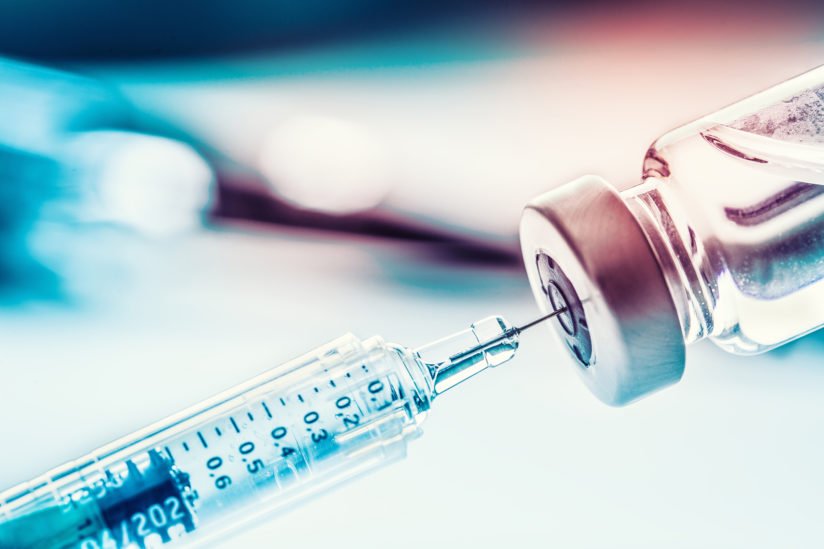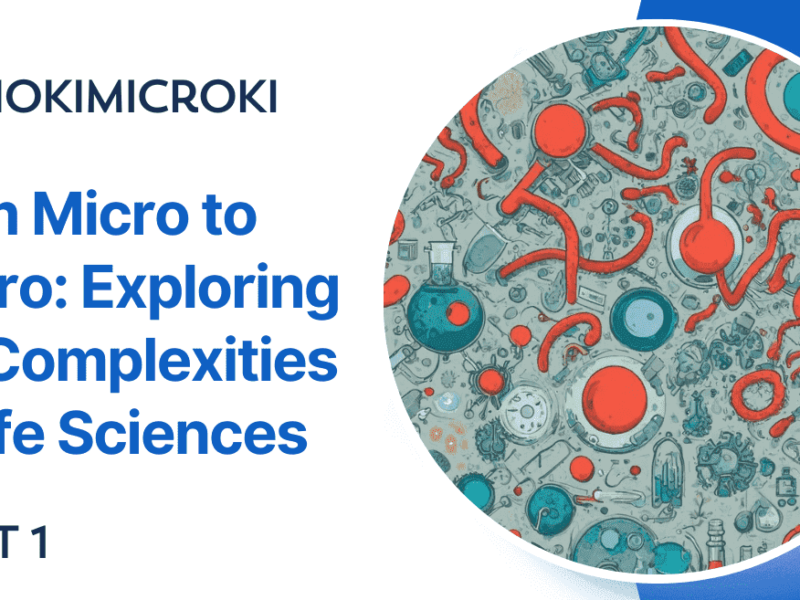History of Vaccines –
Immunology is the branch of life Science that deals with the study of immune system of living organisms. Recovering of people from diseases led the foundation of this branch. Our ancestors had observed that people recovered from diseases had become resistant to that particular disease. The attempts of inducing immunity were practised from ancient times. In 17th century, Chinese people used to drink venom that gradually made them resistant against it. They had also attempted in inducing immunity against small pox by inhaling dried crusts of small pox pustules or by inserting into the cuts or wounds (also called as Variolation).
In 1798, Edward Jenner had observed that milkmaid who had contracted with mild cowpox disease was immune to small pox. He hypothesised that if cowpox fluid is introduced in human, it could immunise them. To test his hypothesis, he injected the cow pox pustules fluid into 8 year old boy and then exposed him with small pox. He observed that the boy was not affected by small pox and his hypothesis was proved. This is how first vaccine was developed. Due to his contribution, Edward Jenner is called as Father of Vaccinology.
The similar experiment was conducted by Louis Pasteur for cholera disease. He had cultivated the cholera pathogens in culture medium and had injected the same in chickens. This resulted in cholera disease in chickens. He conducted series of same experiment and was noting the results. In between, he took a break and went for summer vacation. After returning from vacation, Pasteur injected the old cholera culture in chicken. Surprisingly, the chicken got sick but recovered. When Pasteur injected the fresh cholera culture in the recovered chicken, it remain protected and got immunised from cholera pathogen. Pasteur hypothesized that ageing of culture has caused the loss of pathogenecity of cholera and hence such attenuated cultures could be used to immunise and protect people from disease. He called the attenuated culture as vaccine. He named this in honour of Edward Jenner who had work on cowpox (Vacca means cow).
Louis Pasteur was curious to explore more about the vaccine. He attempted the similar experiment to study the role of attenuated anthrax in sheep. He heat killed Bacillus anthracis, and injected into sheeps. And then he inoculated fresh culture into them. He observed that the attenuated culture has activated the sheep’s immunity and protected it from the disease. Pasteur has attempted his first vaccine on human in 1885. He vaccinated attenuated rabies virus to Joseph Meister who was bitten by rabid dog and saved his life. These experiments and observation established the foundation of Immunology discipline. Based on this attenuation principle, we were able to synthesize vaccines against many deadly diseases like chicken pox, polio, typhoid, and cholera etc.
Principle of Vaccine –
When the human’s are injected with attenuated pathogen, their natural immune system considers it as foreign particle (antigen) and activates the immune system against it. As the attenuated culture has lost its pathogenecity, it cannot cause any disease. The memory cells of immune system stores the information of contraction with attenuated pathogen. Whenever a vaccinated person comes into contact with the pathogen, the person’s memory cells activate the immune response and recover the person from the disease. The goal of vaccination is to eradicate the diseases.
Characteristics of Vaccines –
- It should be safe.
- It should provide protection for long duration.
- It should have high molecular weight.
- It should activate the immune cells like T and B cells.
- It should not cause any side effects to the person.
- It should be cheap.
- It should be easy to use.
Types of Vaccines –
The different types of vaccines are categorised on the basis of the method of antigen preparation and the method of administration. The globally recommended vaccines are of four main types –
- Live/ attenuated
- Inactivate/killed
- Toxoid
- Subunit/conjugate
Live/attenuated vaccines –
- It contains live but weaken form of bacteria or viruses that has lost its pathogenecity.
- The pathogenic organisms can be weaken by genetical modification or by repeated culturing.
- For example – a human viruses are grown on chick embryos (undesired host) and serially passaged or repeatedly cultured (may be up to 10 years) due to which the virus retains its ability to multiply but loses its ability to multiply in humans hence loses its pathogenecity against humans.
- Such live and attenuated viruses are used as vaccine.
- The live attenuated vaccines are the most effective and efficient in activating the long lasting immune response.
- However, the virus or bacteria may regain its lost pathogenecity and revert to its wild form causing the disease.
- This has been observed in the case of oral polio vaccine and hence in many developed countries the oral live polio vaccine is replaced by Inactivated Polio vaccine.
Dead/Killed Vaccines –
- It contains dead or killed form of pathogenic organisms.
- The pathogenic microbes are killed by either physical (heat) or chemical methods (formaldehyde/formalin).
- Such treatment kills the microbe but it retains the ability to activate the immune response.
- Dead or killed form of vaccines cannot revert to its wild or pathogenic form hence they are safer than live attenuated vaccines.
- The drawback of dead/Killed vaccine is that it provides immunity or protection for short period of time and hence it needs booster dose.
Toxoid –
- Some infections are caused by toxins produced and secreted by the bacteria.
- The most common example of such bacteria is Clostridium tetani, causative agent of tetanus; it produces tetanospasmin which is a neurotoxin. It inhibits the release of neurotransmitter – GABA and may cause muscle spasm, tendon rupture, lockjaw and may lead to death.
- For such toxins, the vaccines are prepared by inactivating the toxins. The inactive form of toxins is called as toxoid.
Subunit and Conjugate Vaccines –
- The subunit and conjugate vaccines contains only partial parts of pathogenic organisms.
- Such parts or pieces of pathogenic organisms are antigenic and hence have the ability to activate the immune system.
- Subunit vaccines can be created by either breaking the pathogenic organisms into pieces or by genetic engineering.
- In genetic engineering method, the antigenic protein gene from pathogenic organism is inserted into host cell and it is induced to produce the desired antigenic protein forming recombinant vaccines.
- Conjugate vaccines are made by combination of different pieces or components of pathogenic organisms.
- In conjugate vaccines, the components of pathogenic organisms are conjugated with carrier protein. Such association increases its molecular weight and antigenic properties. Hence, it increases its efficiency in activating the immunity.
- The drawback of such vaccines is its high cost.
Example of different types of Vaccines –
| Live Vaccine | Chickenpox, German measles, measles, mumps, tuberculosis, typhoid fever, yellow fever |
| Dead Vaccine | Cholera, hepatitis A, influenza, plague, rabies |
| Toxoid | Botulism, diphtheria, pertussis, tetanus |
| Subunit vaccine | Anthrax, hepatitis B, influenza, meningitis, papillomavirus, pneumococcal pneumonia, whooping cough |
| Conjugate vaccine | Meningitis, Haemophilus influenzae, Streptococcus pneumoniae, Neisseria meningitides |
What are adjuvants?
Adjuvants are the chemical ingredients that increases the efficiency of vaccines. The usage of adjuvants are first discovered by Alexander Thomas Glenny, a British immunologist. During his research, he observed that vaccines work more efficiently when the syringe is injected roughly. This leads to the local inflammation at the site of injection. With this observation, he decided to add aluminum salts in vaccines inorder to activate the local inflammation and producing better immunity. The term adjuvant is derived from ‘adjuvare’ a latin word which means ‘to help’. Hence, the adjuvants in the vaccines are helping in producing effective immunity against that particular antigen.
As you know that there are different types of vaccines, out of which the vaccines in which dead organisms or component of pathogen are used, they are comparatively weaker in activating immune system. For such vaccines, adjuvants work perfectly. Vaccines with adjuvants may cause swelling, redness at the site of infection and fever and body aches.
The aluminium salts have been safely used since their discovery. The most common examples of Aluminum salts are aluminum hydroxide, aluminum phosphate, and aluminum potassium sulfate. The other examples are Freund’s adjuvant (water-in-oil or oil-in-water) and natural or synthetic bacterial toxins. The researchers are still continuing the research to find and develop adjuvants that would provide long lasting protection.
Characteristics of Adjuvants –
- To enhance the immune system activating ability of weak antigens.
- To increase the rate of immune response.
- To have provide lasting immune response.
- To activate humoral and cell mediated immune response.
- To provide immonological response in infants.
- To reduce the dosage of antigens.
Adjuvants – Mechanism of Action
The adjuvant that present the antigen to antigen presenting cells are called particulate vaccine delivery system. And the adjuvant that activate immune response via specific receptors called toll-like receptors (TLRs) are called immunostimulatory adjuvants. The ultimate aim is to activate innate and adaptive immune response. The mechanism of many adjuvants is still not clear because of the complexity in the immune response.
References –
https://www.mcgill.ca/oss/article/health-and-nutrition-you-asked/what-are-adjuvants-vaccines
https://www.cdc.gov/vaccinesafety/concerns/adjuvants.html
http://www.masslocalinstitute.info/immunizations/Immunizations5.html
https://microscopiaiwm.com/2020/08/11/vaccine-characteristics-and-types/
Kindt, T., Goldsby, R., Osborne, B., Kuby, J. and Kuby, J., 2007. Kuby immunology. New York: W.H. Freeman.
Dr. Sangha Bijekar has 9 years of Teaching Experience at University level. She loves to get engage in teaching and learning process. She is into blogging from last two years. She intends to provide student friendly reading material. She is avid Dog Lover and animal rescuer. She is learned Bharatnatyam and Katthak Dancer. She is into biking and She also loves to cook.


